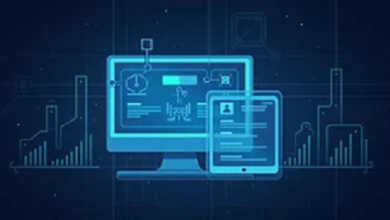Chinese Translation: Human VS AI Technology

Machine translation has just undergone a revolution thanks to artificial intelligence. The software still has a long way to go before it can successfully compete with the abilities of a professional Chinese translation, notwithstanding how sophisticated the technology has become. This begs the question: Will AI eventually take the place of human translators? Continue reading to learn the answer to this question!
1. The Rise of AI in China
China has recently surpassed other competitors in the field of artificial intelligence, as evidenced by the development of applications for mobile payments and other innovative goods that have advanced to the forefront of the industrial landscape.
The world has been able to attend CES 2018, the premier trade event for the worldwide consumer electronics sector, since January 9th. One of the most impressive artificial intelligence (AI) technologies and products at the show is AI correct Translator, developed and displayed by Babel Technology in Beijing, a Tsinghua-based team. This product draws interest from buyers and exhibitors from all over the world.
2. AI Technology: Strengths and Weaknesses
Strengths
Speed and Efficiency
Given the current rates at which data and information are moving, Chinese translation speed—which was crucial even before the digital era started—has become even more crucial. AI translation can translate even lengthy paragraphs or pages in a matter of seconds because it is not constrained by factors like the need to eat, sleep, or even really think deeply.
Pattern recognition
The detection of text and handwriting is one of artificial intelligence’s most common uses of pattern recognition. Even while optical character recognition (OCR) technology has been around for a while and can convert printed letters into text, it has limitations when it comes to handling handwriting and different types of fonts. Because it can recognize text in a wide range of handwritten or printed styles and can identify the type of data being stored, machine learning-enabled handwriting and recognition is significantly better in this regard.
Automation
The amount of repetitive work involved in translating materials often rises with the length of the projects. By automatically introducing translated information where repetition occurs, AI translation can now remove any possibility of inconsistency. This enables translators to concentrate on improving text quality while avoiding repetitive duties.
Unbiased Decision-Making
Rule-based AI translation uses dictionaries and pre-established rules to translate text. In order to learn from massive volumes of data and enhance Chinese translation quality, statistical machine translation also employs statistical models. As a result, AI translators are capable of making impartial decisions. As a result of AI translation’s high consistency, the same terms and phrases will always be translated in the same way, producing more accurate and consistent translations.
Weakness:
Emotional Intelligence
Every Chinese translation has a distinctive style and tone from every other document. Even though a document may have a poetic, humorous, or persuasive style and tone, machines cannot translate them. The paper must have that certain tone and style in order for the reader to understand it; otherwise, the meaning of the document may be lost. Because the AI translator lacks the emotional intelligence to understand the tone and nuanced details of the original text, the result is flat and soulless.
Ethical and Moral Dilemmas
Even though AI can accomplish the task more quickly and for a longer period of time, a human’s touch is still necessary for it to be genuinely successful. This is due to the fact that people are capable of thought. There is no possibility for a robot to have cognitive thinking, no matter how powerful a particular program may be. In addition to their inability to understand subtext or the basic principles of human communication, they are also unable to discriminate between what is morally acceptable or evil.
Contextual Understanding
AI translation is primarily concerned with literal translations and is unable to understand contextual meaning. Because of this, Chinese translation sometimes loses its emotional tone and intended meaning, which diminishes its impact on the intended audience.
3. Human Capabilities: Advantages and Limitations
Advantages
Creativity and Critical Thinking
When translating creative text like slogans or marketing copy, AI translation algorithms frequently have trouble. Such documents are translated expertly by human translators who take into account the context and select the best possible alternative to effectively express the intended message.
Emotional Intelligence
Human translators go beyond simply translating the words to convey the tone, meaning, and emotion of the original text. They make sure that the message’s impact on readers is maintained by faithfully translating it into the target language.
Adaptability
Professional Chinese translation by human translators have a thorough grasp of linguistics, including grammar, idioms, and subtleties. They are able to faithfully translate content and modify it to fit the cultural norms of the target language, resulting in clear communication with the target audience.
Complex Contextual Understanding
There are terms with several meanings in the various languages, which might be a big issue for machine translation. Only a human translation can accurately convey the full meaning of these words by relating them to the context. By immediately comparing the word to the content, the human translator may quickly determine the appropriate meaning.
Limitations
Data Processing
In order to avoid having a detrimental impact on the final product, or data output, data processing must be done appropriately. The speed and sophistication of programmed AI translators cannot be matched by human translation, nevertheless.
Learning Speed
Being able to translate various kinds of information demands a profound comprehension of the subject you are working on as well as the appropriate usage of several terminologies. Fluency in a foreign language does not ensure this. As a result, translators need time to study and advance in the subject matter they translate.
Physical Limitations
Technology is becoming an increasingly important part of the Chinese translation industry. Translators can be overwhelmed by the rapid growth of automated translation tools. They lack knowledge or are limited to using assistive tools.
4. Make Use Of AI technologies for Chinese translation with Human capacities
The greatest option for translating documents would seem to be human translation, but artificial intelligence is getting better all the time. Many believe that these AI tools will soon replace human translators as Google uses statistics to provide better translation outcomes. Even though human translation appears to be significantly more sophisticated than artificial intelligence, there are still several important problems, such as the high rates of human error.
AI translation may be quick, but there are serious issues with inaccuracies and Chinese translation that is taken out of context. To achieve the ideal balance of accuracy and quality in translation, every competent user of translation services will use both AI technologies and human capacities.








